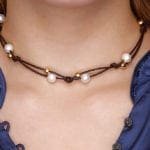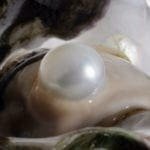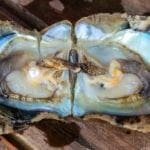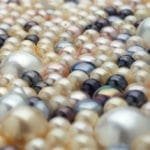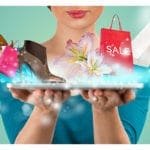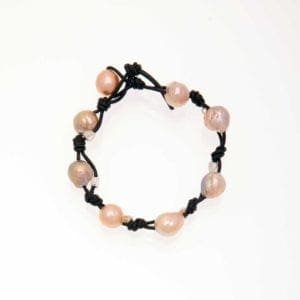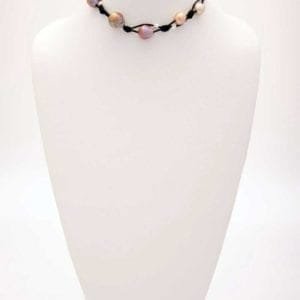The task of selecting that exceptional piece of pearl jewelry can be daunting. After all, how do you know that you’re getting the best value for your money? How do know if the pearls you choose are high quality? Perhaps you want something more modern looking, or a maybe vintage piece is more your style. What shape and color looks best and will make the fashion statement you’re looking for? It’s not as easy as just pointing to anything in the glass case and saying ‘ok, that one.’ When it comes right down to it, how do you choose pearls?
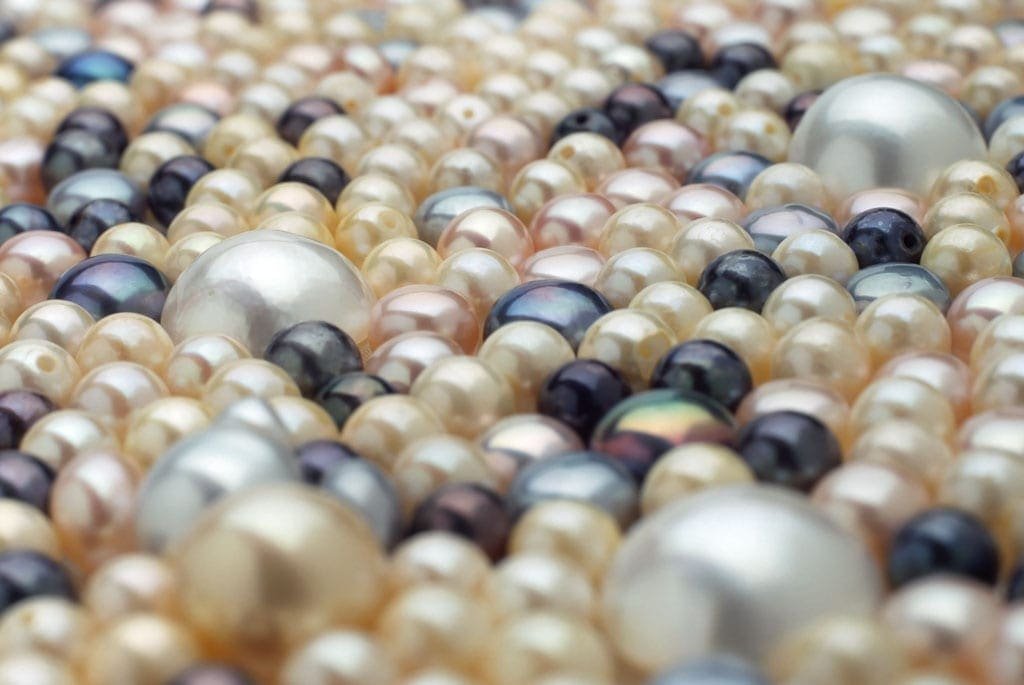
How to Choose Pearls
Determining the value of pearls, whether natural or cultured, freshwater or saltwater, depends on six qualities:
- color (both the body color and the overtone)
- luster (the shine and radiant glow)
- surface texture (bumps, dimples and blemishes)
- size (larger pearls are rare)
- pearl shape (round is more valuable)
- nacre quality (thin nacre is less durable)
If you buy a strand of pearls then a seventh factor should be considered: strand similarity. There are so many modern and classic styles, shapes, colors and sizes to Akoya in today’s pearl market, but the main consideration when choosing pearls is to consider your skin tone and wardrobe. And if it’s the coveted strand of pearls you’re looking for, you may also want to consider the length of the strand.
Learn more about each of these qualities:
Cultured and Natural Pearls
There was a time when pearls could be easily found in the Persian Gulf, but Science has made it possible for pearls to be grown in laboratories or cultured on farms. These types of pearls are called cultured pearls and the credit for the production of cultured pearls, specifically
In today’s market, all pearls, whether freshwater or saltwater, are cultured. Freshwater cultured pearls are produced by inserting a piece of membrane or tissue from the lip of the mantle with a nucleus of protein inside the mollusk, which then forms a pearl sac. The pearl sac creates nacre (nay-ker), often referred to as ‘mother of pearl,’ which coats the ‘sac’ as well as the inside of the mollusk shell. Culturing pearls with this method does not produce perfectly round pearls, but the result is a pearl with a solid nacre.
Akoya, Tahitian and South Sea pearls are all cultivated saltwater pearls and use a different method to culture lustrous radiate gems. In farms and labs, technicians insert a small round bead inside an oyster and the oyster then secretes layers of nacre around the bead and within the inside of the shell. The result produces perfectly round pearls but without a solid center of nacre. These pearls are referred to as non-nacreous.
Natural pearls do exist, but are expensive. If you’re considering natural pearls, never purchase the pearl jewelry without a certificate of authenticity that states whether its natural Tahitian or South Sea pearls.
Choosing Pearl Color
When it comes to the color of pearls, there are actually two colors to be aware of: the body color and the pearl’s overtone, sometimes referred to as a pearl’s ‘orient.’ This can pose a challenge since the overtone may or may not be present because it’s not always evident. The
Obviously, when you choose pearls it’s always wise to consider your skin tone. But to fully appreciate the similarity in tone and color of a strand of pearls it’s best to examine them against a non-reflective white or eggshell colored surface. If possible, compare two strands holding each at eye-level under diffuse full-spectrum light or natural sunlight.
Choosing Pearl Luster
What’s most appealing about a strand of pearls is its dazzling luster. It’s the radiant glow created as light travels the various layers of nacre and is then reflected back into the eye of the beholder. Evaluating luster has everything to do with the thickness of pearls nacre. In fact, reflection plays a big part in choosing pearls with high quality luster. A high shine and reflection that is like a mirror with bold definition means it has excellent luster. If the surface is extremely dull, milky or chalky with very little reflective properties, it may have a thin coating of nacre, and is therefore, of lesser quality. However, there are exceptions. For instance, Akoya pearls have a high luster, while South Sea and Tahitian pearls are less reflective because they are cultivated in warmer sea water temperatures. Pearls grown in warmer seas have a thicker nacre, which means its luster appears more silky than reflective.
When you choose pearls, does it have a bright shine? Is the shine surface even and reflective? How crisp and clear is the image of yourself in the pearl? If the image reflected back is clear and well-defined, then its luster is high, and the pearls are of high quality. Also be sure the luster is consistent along the entire pearl as you rotate it.
Choosing Pearl Surface Texture
Think of a pearl’s surface as similar to a person’s skin. Bumps, dimples and blemishes can be found on pearls too. If these flaws and imperfections take away from a pearl’s beauty and cannot be hidden, the price of the pearls is considerably lower. In reality, most pearls will have tiny flaws, but the ‘cleaner’ the surface texture the more evenly the light will reflect off it. Also, it’s common practice to hide these tiny blemishes or dimples by placing the drill hole as close as possible to these flaws.
You should always examine each pearl, whether you’re buying pearl earrings or a strand of pearls. Look for slight surface imperfections. Tiny grooves or marks are not uncommon since the pearl sac within an oyster may have foreign matter brush up against it as it grows. However, you do want to make sure that these flaws have not been removed, reworked or sanded down, since it lowers the value of the pearls. Look for obvious texture and surface differences along the pearls to determine if they have been sanded or removed entirely.
Choosing Pearl Size
Depending on the environment the pearls were grown in and whether the pearls are cultured or natural; pearl sizes will vary. Larger pearls are created because they were left to ‘cure’ for a longer length of time and the original bit of debris or bead surgically inserted into the center happened to be larger. Larger pearls are rare and therefore more expensive. Cultured or natural South Sea pearls are larger in size than cultured Akoya pearls.
If choosing a pearl strand, the size of the pearls will often range from 7mm to 8mm in size with the slightly larger ones placed in front. When examining a pearl strand be sure that each pearl is the same size as the one next to it.
Choosing Pearl Shape
Just as pearls come in different colors, their shapes can vary too. It mostly boils down to personal preference. Still, round continues to be the most coveted and valued, yet uncommon, since they are the most difficult to cultivate or naturally form. The pearl shapes available to you include:
- Baroque – slightly oval, irregular shape, most freshwater pearls have this shape.
- Round – completely round, little to no surface blemishes
- Off-round – similar in shape to a round pearl but slightly wider on one end
- Oval – generally wider in length than width, but pearls with an oval shape make an exceptional necklace.
- Drop – often called teardrop, this pearl is shaped similar to an egg with one end a little more pointed. This shape makes lovely pendants if it’s the right size as well as beautiful earrings.
- Button – a pearl mostly asymmetrical, with a dome shape with flat side, used in the design of pearl rings.
- Mabe or Circle – a pearl that’s flat on one side, thus the shape of a circle.
Nacre Quality of a Pearl
Nacre is the shiny coating that surrounds the nucleus of a pearl. Thicker nacre mean a higher quality and a stronger luster or sheen, and can be achieved by staying within an oyster shell for longer lengths of time. A pearl with thin nacre is less durable, and in addition, it can be scratched and possibly chipped if dropped or damaged in some way. Generally, a report or certificate will rate the nacre of any pearl as thin, thick or medium. Obviously, the thicker the nacre the more coveted and expensive the pearls.
High nacreous pearls are more lustrous, so the pearl should have a nice even shine. If you can see the nucleus reflected within a pearl, it means its nacre is thin. Also if the nacre can easily be scratched, has a dull shine and color; it’s a sure sign that the pearl is non-nacreous. Pearl experts measure nacre thickness through the hole of the strand, and can produce x-ray or ultrasound images of the pearl to check for nacre thickness.
Pearl Strand Match and Similarity
Any pearl jewelry, whether it’s a strand, earrings or a pearl set, should match as closely as possible to one another. Visually appealing pearls similar in all the facets of high-quality pulls the jewelry design together. Since so many factors and variables are considered during the culturing of pearls, it’s virtually impossible to match, especially if a certain color or variety of pearl is rare. In fact, the more unusual the natural hue of a pearl is, the more difficult it is to match. In some cases, it could take years, and that time is also reflected in the price as well.
As you look over your selected pearls, compare each one closely, checking that each one matches the others in overall shape, size, color, luster and nacre thickness. Also take a step back to look at the overall presentation, especially if it’s a necklace, earrings or ring set.

